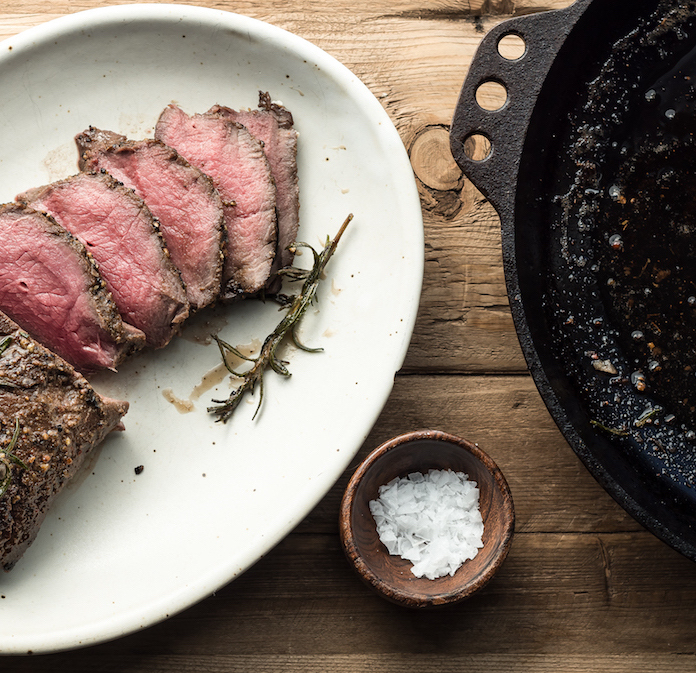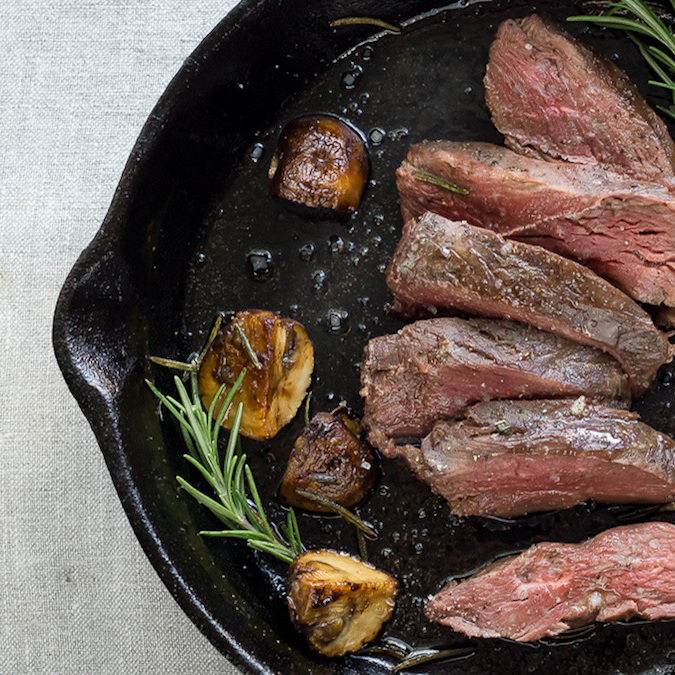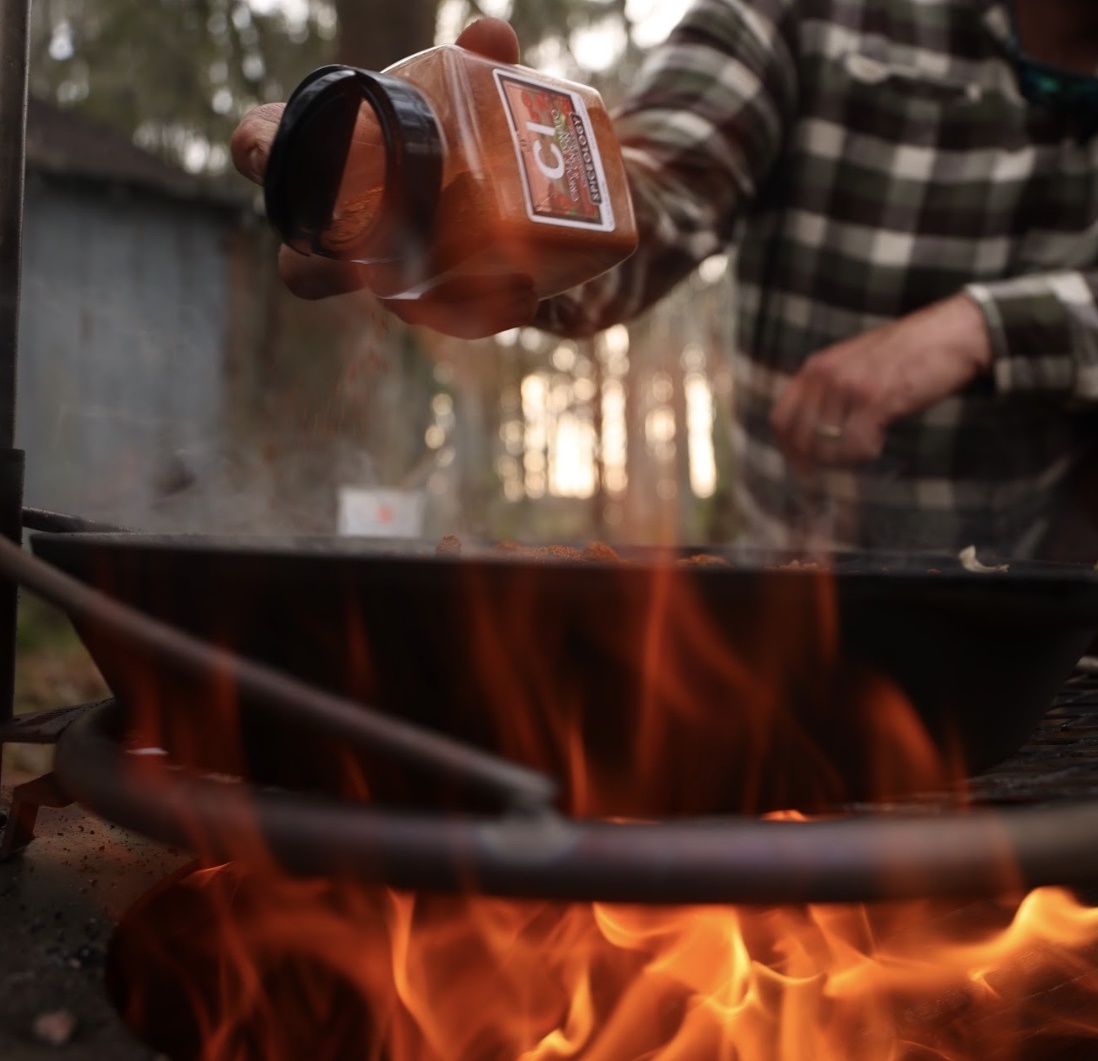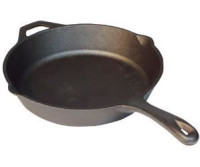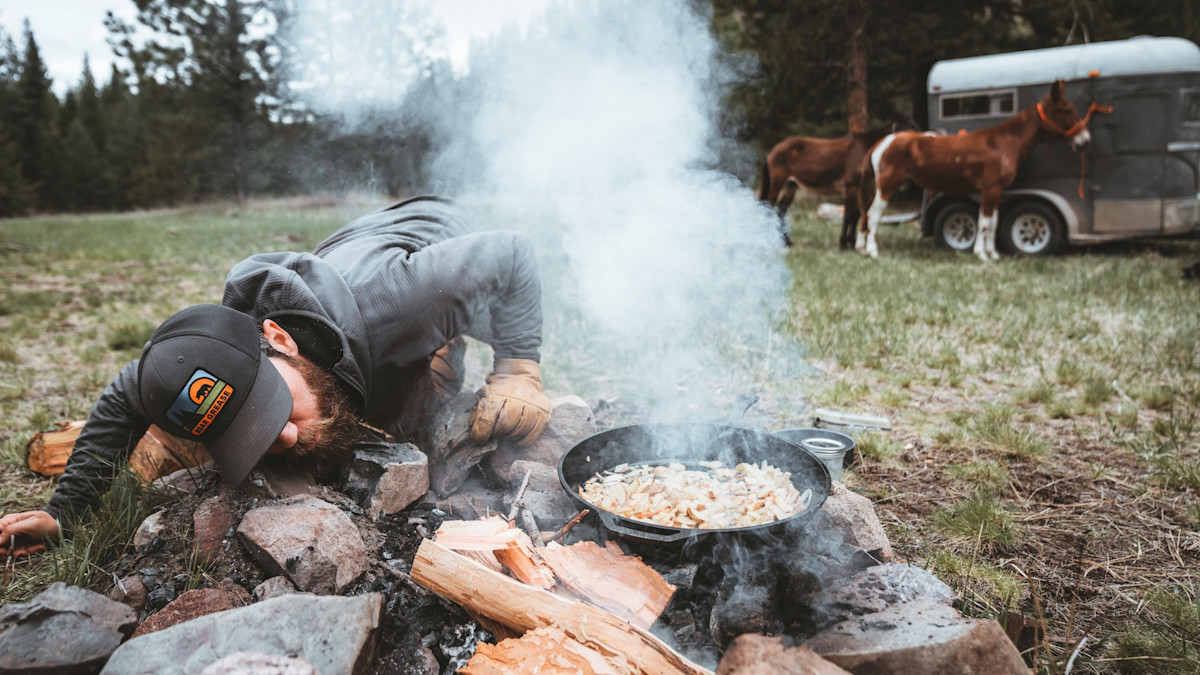
Cast iron pans are the workhorses of the kitchen. The utilitarian tool can fry eggs and sausage for breakfast, revitalize leftovers for lunch, and perfectly sear a backstrap for dinner.
So what’s all the hype about cast iron anyways?
Cast iron conducts heat evenly, and once you get it screaming hot, it stays that way, and doesn’t fluctuate. It's hard to beat the conductive nature of cast iron when foods need that kind of immediate, hard heat—like browning shanks before braising or putting the finishing sear on a goose breast.
Jump to: Cast Irons We Use
It’s also extremely durable. Many folks pass cast iron down from generation to generation within their families. Not many kitchen wares are so well-equipped to stand the test of time.
If you don’t have your great-grandmother's skillet covered in a few generations of bacon grease, never fear. The cast-iron cooking club is open to any and all. First, you have to pick which is right for you.
Things to Consider When Purchasing a Cast Iron
A cast iron is a cast iron, right? Not quite. When choosing the right one for your kitchen, it’s important to consider how you primarily plan on using it.
For example, classic cast irons are great for outdoor cooking and you can cook anything from chili to cobbler in them. But if you’re looking for something for your home kitchen, enameled cast iron might be easier to clean and maintain when making things like spaghetti sauce or braised meats. The criteria you should consider when chooing a cast iron skillet are:
- Versatility
- Shape and Size
- Finish
- Price
Jump to: What Makes A Good Cast Iron
Cast Irons We Use
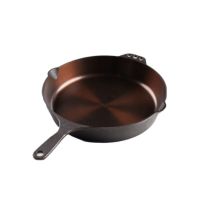 Smithey Number 12 Cast Iron Skillet
Steve's Pick
|
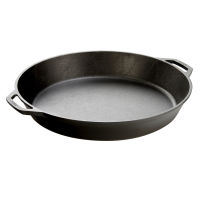 Lodge Chef Collection 17" Skillet
Kevin's Pick
|
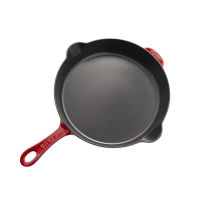 Staub Traditional Deep Skillet 11"
Danielle’s Pick
|
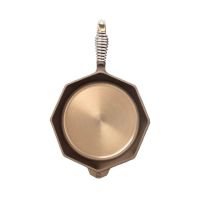 Finex 12-inch Cast Iron Skillet
Kimi's Pick
|
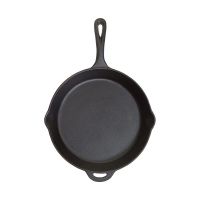 Camp Chef 14-inch Skillet
Maggie's Pick
|
|
|---|---|---|---|---|---|
| Weight | 8 lbs | 13.5 lbs | 6.6 lbs | 8.5 lbs | 9.5 lbs |
| Depth | 2.25" | 2.62" | 2.17" | 3.4" | 4" |
| Finish | Polished | Unpolished | Enamel | Polished | Unpolished |
| Handles | Handle and helper tab | Two | Handle and helper tab | Handle and helper tab | Dual handles |
| Price | $200 | $70 | $150 | $230 | $37 |
| Field Notes | Field Notes | Field Notes | Field Notes | Field Notes |
What Makes a Good Cast Iron
Here's a detailed breakdown of the criteria we use to choose the best cast iron skillets.
1. Versatility
Cast irons are inherently versatile. However, the range of uses of a deep-sided skillet is far greater than a pan that comes with built-in grill marks. While those edges may make for a great grilled cheese sandwich, they’re not doing you any favors when trying to sear a piece of meat.
2. Shape and Size
A big 14-inch skillet might be a bit much if you’re only feeding yourself regularly. Conversely, if you’re cooking for a family of four, you might want to consider something bigger than an 8-inch skillet. Likewise, it's important to think about the depth of your pan. A flat skillet will fry eggs great but will fall short if you want to make something like a hash or frittata.
3. Finish
Most cast iron these days comes pre-seasoned. It’s up to you to keep up those non-stick tendencies that are already established. However, enameled cast irons offer another alternative that may not be quite as hardy as classic cast iron (they are prone to chipping and breakage) but have other notable qualities.
Where the smells and flavors of foods like fish and acidic sauces tend to stick to cast iron after being cooked in them, enamel provides a protective, easy-to-wash barrier that prevents unwanted lingering aromas. Enamel is also easier to clean and maintain than standard cast iron.
4. Price
You can buy a good cast iron for $20 or $200. Most higher price cast irons are associated with aesthetics and extra features that are nice but unnecessary to some folks. Perhaps you plan on keeping this cast iron on your stove and you want it to look nice, so it might be worth spending a little extra.
Field notes from the MeatEater Crew
These may not be the only cast irons in our kitchens, but they’re the ones we turn the heat to most often. Read on for more details and comments from the crew.
Steve's Pick
Rust-Free and Refined
The Smithey is "destined to be your family heirloom," according to their website. With its updated vintage look and signature polished finish, this is a cast iron certain to turn heads in your kitchen. MeatEater founder Steven Rinella takes that praise a few steps further:
"I've owned quite a few cast iron skillets over the years and have had all the usual battles with keeping them well seasoned and rust-free even while sharing them with roommates and family who don't know the rules about taking care of cast iron," Steve said. "By far, though, the easiest and nicest cast iron skillet I've owned is the Smithey Number 12 Cast Iron Skillet."
Specifications
- Weight: 8 lbs
- Depth: 2.25"
- Finish: Polished
- Handles: Handle and helper tab
- Price: $200
Kevin's Pick
History Speaks for Itself
This dual handle skillet walks a fine line between skillet and Dutch oven. With high enough sidewalls for shallow frying and enough room to roast a bird or two, this is a cast iron that is built to feed a crowd.
"Growing up both my grandmothers had Lodge cast iron pans handed down to them from their mothers,” Kevin said. “The amount of cornbread cooked in these pans had turned them to a beautiful shiny black and they were even more non-stick than the most expensive Teflon pan you could buy."
Specifications
- Weight: 13.5 lbs
- Depth: 2.62"
- Finish: Unpolished
- Handles: Two
- Price: $70
Danielle's Pick
Easy-Clean Enamel
When meals require high and even heat, this is the pick. Staub’s enamel-coated cast irons are the perfect for hard sears with no sticking. Their even heat distribution makes them ideal vessels to ensure sucessful Maillard reactions everytime.
"I received my first Staub over ten years ago as a wedding gift and it is still the first piece I grab whenever I need to sear a piece of meat, shallow fry, or caramelize vegetables."
Specifications
- Weight: 6.6 lbs
- Depth: 2.17"
- Finish: Enamel
- Handles: Handle and helper tab
- Price: $150
Kimi's Pick
Seasoned with Style
Finex offers a unique hexagon-shaped skillet with the option to add a lid for an additional cost. This different shape and the revolutionary spiral handle (which allows you to grasp the hot pan) sets this cast iron apart from the rest.
"The Finex skillet is as classic as it gets," Kimi said. "But the edges of this skillet really take it to the next level. They are not only ideal for pouring liquids and sauces, but when it comes to serving casseroles or quiches or anything that might require a spatula-like serving utensil, the straight edges of the skillet, formed by its octagon shape, makes serving with a straight edge tool the perfect fit."
Specifications
- Weight: 8.5 lbs
- Depth: 3.4"
- Finish: Polished
- Handles: Helper tab and spring handle
- Price: $230
Maggie's Pick
High and Wide
A big cast iron that can go on a camping trip and cook breakfast and dinner but also cook a refined meal at home is the epitome of cast iron usage to me. I want something large enough to sear meat, sauteé veggies, shallow fry, and even bake in. A simple cast iron design is more than enough to get the job done in my kitchen.
Specifications
- Weight: 9.5 lbs
- Depth: 4"
- Finish: Unpolished
- Handles: Dual Handles
- Price: $37

